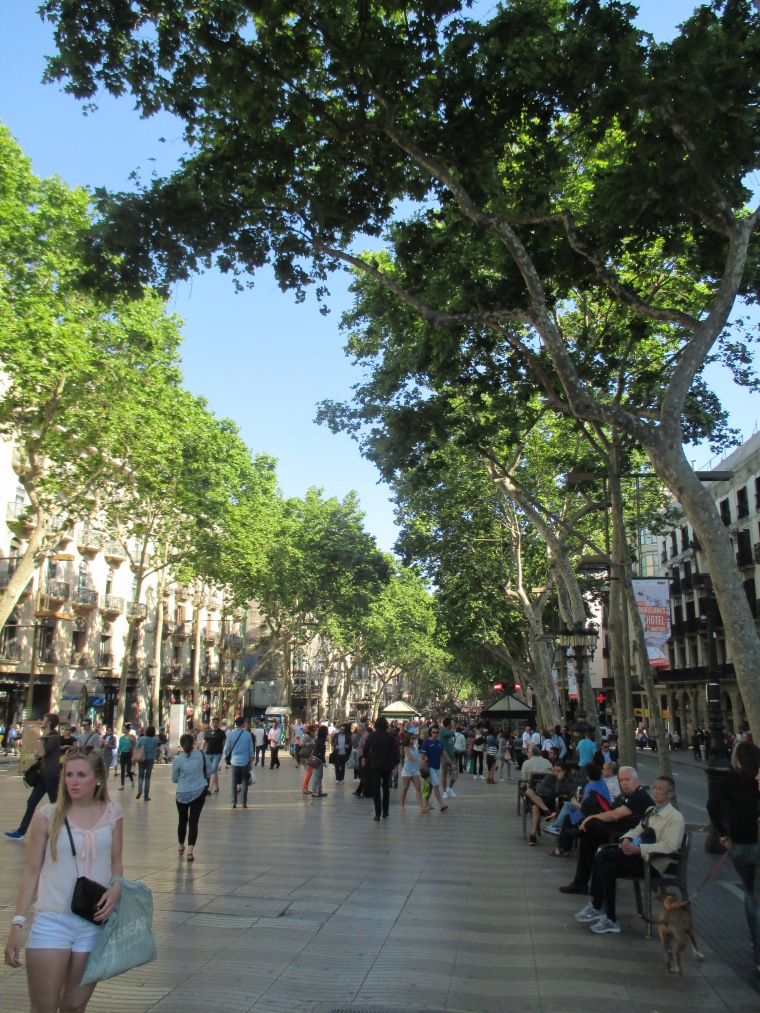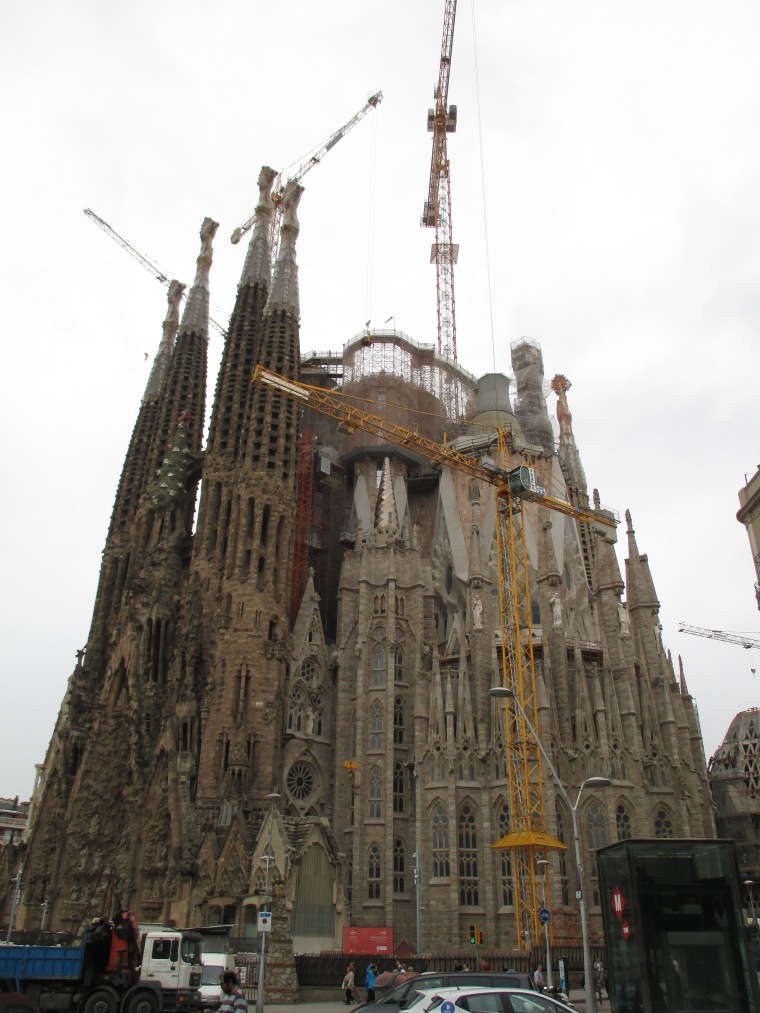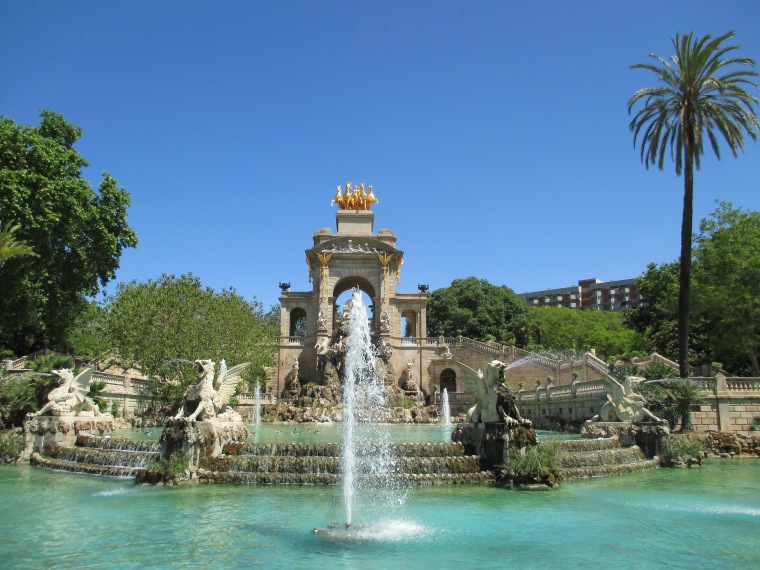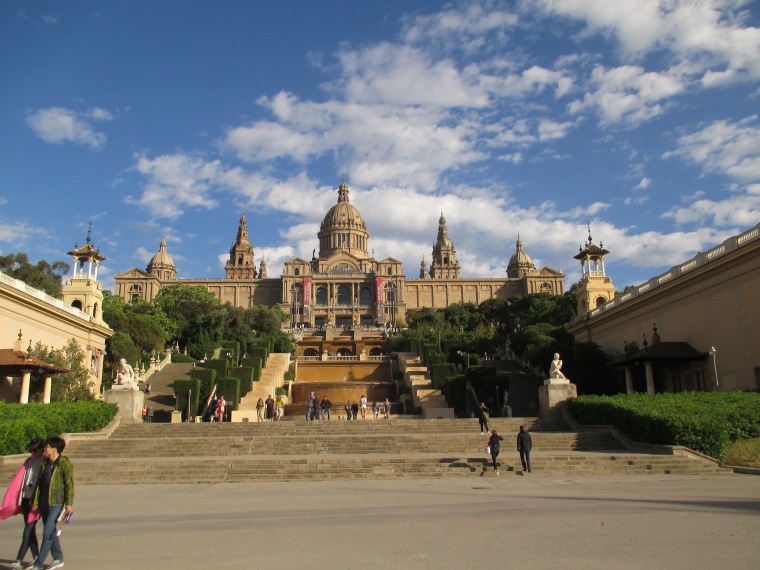Barcelona didn’t become a Top 5 most-visited destination until after the 1992 Olympics. Before that, less than 2 million visitors came each year. Today, over 7.5 million people with hopes to reach 10 million in the next few years (source). Quite a feat for a city that has a population of only 1.6 million.
Visiting it for the first time this past May, I can see why so many people flock here. The sights, architecture, neighborhoods, food, beaches, and culture…it has something for everyone. Even the approach flying into Barcelona was beautiful: passing over a mountain range, followed by a coastal decent into the main airport just outside the city.
Barcelona was also the place where I tried AirBnB for the first time. I was eager to partake in the “Sharing Economy” and was fortunate enough to find a small room for rent right off of the main pedestrian area along La Rambla. The quiet street provided solace at night when sleeping but was also near the metro system and one of the main plazas: Plaça de Catalunya.

Getting Around:
Barcelona is well served by an extensive underground metro system. However, depending on where you stay, it is best to walk through the neighborhoods and take in the sights. Using the metro is mot applicable when trying to get out of the city center or to specific sites. However, if you chose to use the metro several times, buy a 10-trip metro card (called the T10) for 10.30€ instead of paying 2.15€ for each ride.There are also multi-day passes available starting at 14€.
To get from the airport, I recommend taking the Aerobus to the main plaza (Plaça de Catalunya.) for 10€ return ticket (roundtrip). It runs every 5 minutes and takes about 35 minutes to reach the plaza with only a few stops along the way. It is the cheapest and most convenient way in.
Sites:
La Rambla– this street is always a hub of activity. However, it’s frequently overrun with tourists and pickpockets, so I suggest getting off the main street by going down one of the side streets. Within only a few blocks you’ll still have plenty of options for food and drink, but without all the crowds and high prices.
Sagrada Família– Many have heard of this church designed by famed artist Antoni Gaudí. Construction started in 1882 and is still going on to this day, with the goal to complete the final touches of this massive church by 2026 to coincide with the centennial anniversary of Gaudí’s death. Truly a wonder to see inside and out, I highly recommend making it a place to visit. If you wish to go, plan to arrive early to avoid the crowds. When we visited, we arrived shortly after 9am and still had to wait 2 hours to get in the church. They limit the amount of visitors inside at any one time so buy your ticket as soon as you arrive and check your entrance time. Signage can be poor and with the constant movement of construction vehicles, one needs to be mindful when walking around. Visitors need to go to one side of the church to buy tickets and then go back around to the other side to enter. Tickets are 15€ with options to upgrade for tours and visits to one of the towers.

Parks– Barcelona has many public parks that are stunningly beautiful. Take some time to explore these at your leisure. I did one late morning and found myself coming across a virtual oasis in the city:

Plaza’s– Like many other European cities, plaza’s have and still serve as important cultural and historical places. One such plaza (or Plaça) to explore is the Plaça d’Espanya and surrounding area. Built for the 1929 International Exposition (source), this plaza and accompanying street is beautiful and also the place where the Magic Fountain Show is displayed at night. From April through October, the show runs from Thursday-Sunday, every 1/2 hour after sunset. The rest of the year, shows run on Friday and Saturday evenings only. Best of all- it is free to attend and anywhere along the street gives you a great view.

Other notable sites:
Olympic Facilities– Many of the facilities built for the 1992 Summer Olympic games still stand. Too bad many other cities have failed to have the lasting success the games are touted to bring to each city that hosts them.
Park Güell-set atop a hill, the park provides good sunset views. Also designed by Gaudí, walking around the perimeter is free, while paid entrance is required for the inner part.
Passeig de Gràcia (Main Street)- while touristy, this tree lined street has some amazing architecture.
Barcelona Cathedral– originally completed in 1420, it is a beautiful cathedral to visit. Located in the older part of town, you can find many free tours leaving from the square outside the cathedral.
Food:
Tapas: Typically small, simple appetizers served for free when one orders a drink, many places have taken an upscale approach to serving them as more of a meal than a complimentary piece with a drink. There are a seemingly endless array of tapas but many classics can be found almost everywhere. Acting upon a recommendation from a friend, I traveled to a small bar/restaurant in the Grácia neighborhood called La Gata Mala. It was authentic; no english, vibrant with culture, and best of all, delicious tapas served gratis with any drink ordered. Make sure you get there early and be sure to order the patatas bravas!

Also considered a style of tapas, pinchos are small handheld snacks that come in a variety of styles but are most commonly found with a skewer. You can choose from a variety of creations at most bars and can be ordered for 1€ a piece. My recommendation is to go to the Poble-Sec neighborhood, meandering through neighborhood along Carrer de Blai, where there are plentiful options to stop into one of the many bars and grab a drink and a few pinchos. This section is within walking distance from La Rambla and still holds onto the authentic Spanish feel.
Other notables:
Bar la plata-On career de la merce, they serve pescaito frito (fried little fish)- a must try!
Cerveceria la Surena– in the university area, they have a lunch special where you can choose 4 types of traditional Spanish foods together for under 6€.
St Joseph’s Market- while it can be considered a tourist trap, there are many small places in the back that serve up Spanish-style tapas in a lively environment steps from fresh fish and meat stalls.
Tips:
-Most signs are in both Spanish and Catalan (the official language of Barcelona). English translations are available in most places as well.
-Get the “menu del dia” for a good deal at lunch. Most places offer them and they tend to change the offer each day.
-There are countless cafes scattered throughout the city as well. I recommend Cafés El Magnífico for outstanding coffee. Also try Churros con Chocolate available at most cafes as well!
With many airlines serving Barcelona, avoid the main tourist season (June-August) and book your ticket! The beaches are plentiful, the food amazing, and the history fascinating. I can only hope that the few recommendations and pictures in this article help spur your interest to visit this culturally enriched city and all that it has to offer!
Note: Prices are accurate as of May 2015
